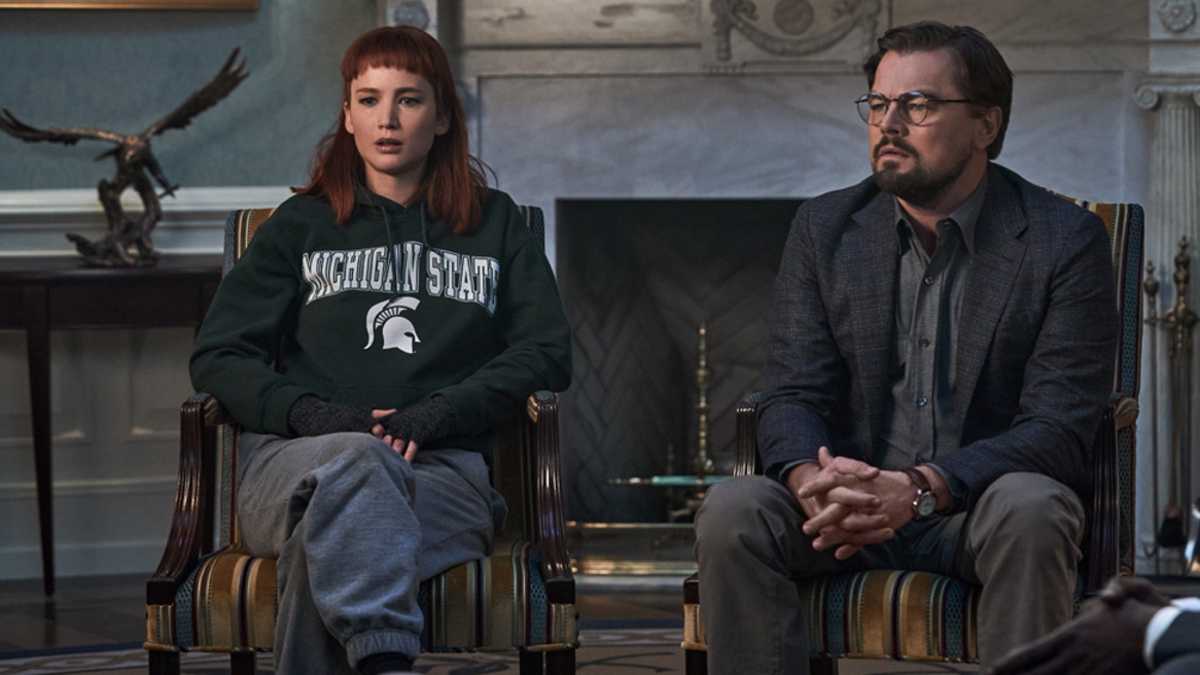Latin America. The Netflix film "Don't Look Up" follows the lives of two astronomers from academia, who after discovering that the trajectory of a comet is on its way to destroying the world in six months, undertake a media campaign to warn humanity.
The film was directed by Adam McKay, while Linus Sandgren (FSF, ASC) was responsible for photography. The color grading was in charge of Matt Wallach, of the company Company 3, who resorted to the program of editing, color grading, visual effects (VFX) and audio post-production DaVinci Resolve Studio.
In recent years, Wallach has been mainly dedicated to the color grading of daily shots and has worked alongside the most renowned photography specialists, including Sandgren, who admires Wallach's work and put him in charge of the color grading of the daily shots and the final result in his previous film "No Time to Die". Sandgren prefers to shoot in negatives, as far as possible, instead of in digital form and, when it comes to etalonar, he tries to preserve the filmic aspect that this type of recording gives to the images. It also chooses to approach color in order to maintain the appearance achieved by photochemical revelation.
In the case of "Don't Look Up," Sandgren recorded images in a variety of formats, as well as negatives, which added complexity to the project. "We shot mainly in 35mm, but we also shot some shots with anamorphic, spherical lenses, and even with Super 8 cameras and a few in 16mm format," Wallach said. "We also shot quite a bit of footage with TV cameras in a studio-like enclosure when characters appear on screen."
Wallach suggested a working dynamic to etalonate these scenes. "I proposed that, when we got to the TV studio section, we would use extremely saturated images, almost like when you go to an appliance store and all the screens are set up in demo mode, with extremely vivid and bright colors, so much so that it does bad to the eye," he explained.
The challenge of these elements is the absence of a logarithmic file during the color grading stage, which can incorporate difficulties in wanting to achieve more intense colors. "The material was not in RAW files, but was filmed in Rec. 709, which basically is what it is," Wallach added. "Initially, I started working as with the rest of the images, using compensation and positive tools. After this step, we manipulated the contrast and saturation to the extreme and applied different curves in Resolve to see how far we could go before the image started to deteriorate."
The numerous amount of visual effects was also another drawback, not only the most important computer-generated shots, but also more subtle ones, not so obvious to viewers. "There were several shots that maybe didn't contain visual effects at first, but they happened to have them as a result of the pandemic," Wallach said. "Limits were placed on the number of people who could be present on set at once, including actors, so some scenes were achieved from several composite images."
The special effects team contributed digital material from a crowd, and along with fixed 2D elements and volumetric captures, we were able to extend the shot of the 25 or 30 actors present on the set to a congregation of 100 people or more in the same frame. "In some shots, like the concert and the demonstration scenes, we had to replace it with digital images of crowds, so that it looked like there were more people," Wallach said. Thanks to DaVinci Resolve Studio, the color grading specialist was able to balance the different elements and thus ensure that the dynamic lighting was distributed evenly between the audience and all the elements in a natural way.
Wallach stated that the tools offered by DaVinci Resolve Studio significantly helped it to be more efficient in achieving the desired nuances. "I used the chromatic distortion tool, particularly when trying to unify the composite images. I could have used a combination of other tools for the same task, but the effect I chose made collaboration with others very efficient, as it allowed me to change different parameters at once and show Linus how the image was being modified simultaneously. For example, when we were alternating between negative and digital material, we wanted the red in the television images to be in a certain region, and DaVinci allowed me to take those reds and move them to where I needed them with just one movement. I was also able to make global changes faster than if I had tried to do the same with overlaps or curves."
Netflix released the film in theaters at the same time as on its global Online platform. This meant having access to both tools that provide the possibility of working with a high dynamic range (HDR) and obtaining a final product in DCI-P3 format. "I turned a lot to Resolve's HDR controls to tweak the dynamic range on the negatives, rather than using the curves and logarithmic controls for the highlights," Wallach said. "It truly compensated for the trimming process in HDR, as the P3 version for movie theaters was the star style. The HDR color circle panel offers the flexibility to adjust the affected range in each zone and then modify the exposure in each zone individually. I think hdr controls help achieve the desired effect for high dynamic range versions in a simpler way than before."he concluded.


























Leave your comment